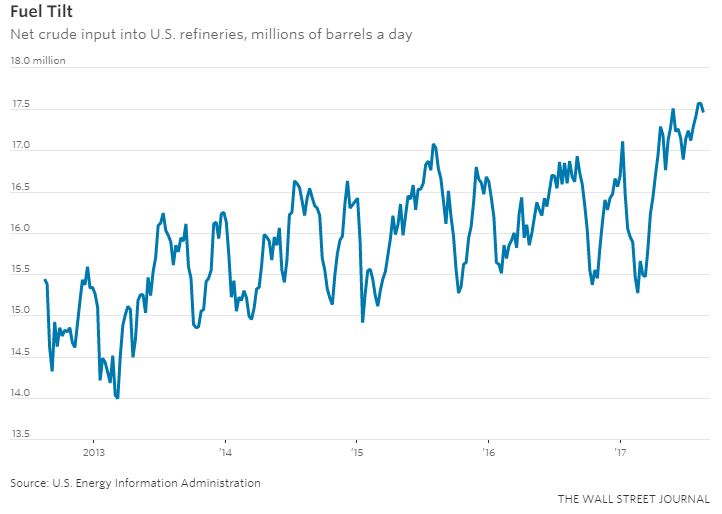Harvey’s Lessons for America’s Stretched Energy Infrastructure

 Wall Street Journal | Spencer Jakab | August 28, 2017
Wall Street Journal | Spencer Jakab | August 28, 2017
For more than 40 years, the U.S. has worried about the security of its oil supply. Hurricane Harvey is another reminder that the infrastructure that processes and delivers oil is in many ways more important.
After the Arab oil embargo, the U.S. began filling its Strategic Petroleum Reserve, which holds enough oil to offset 94 days of imports, according to the Energy Department. Yet it is a case of the generals fighting the last war. The U.S. imports about 25% less oil than it did a decade ago and exports over a million barrels a day, up from virtually nothing.

Harvey’s hitting the Gulf Coast of Texas highlighted another potentially significant change. The U.S. relies on fewer facilities, run closer to their physical limits, to turn that crude into fuel and get it to consumers.
The U.S. has 141 operable oil refineries today, which is 79 fewer than 30 years ago. Those refineries have nearly 30% more capacity and are used much more heavily, about 90% on average over the past 12 months. The heaviest concentration is along the Gulf Coast where the industry has deep roots and has been allowed to expand. Harvey has temporarily knocked out about 15% of U.S. refining capacity.
Moving the refined product to customers also falls disproportionately on a few pieces of infrastructure. The Colonial Pipeline carries over 2.5 million barrels a day, or about half the refined product consumed along the entire East Coast. Last year saw severe disruptions to gasoline supply in the Southeast due to construction accidents along one of its sections.
Read the full story here.

